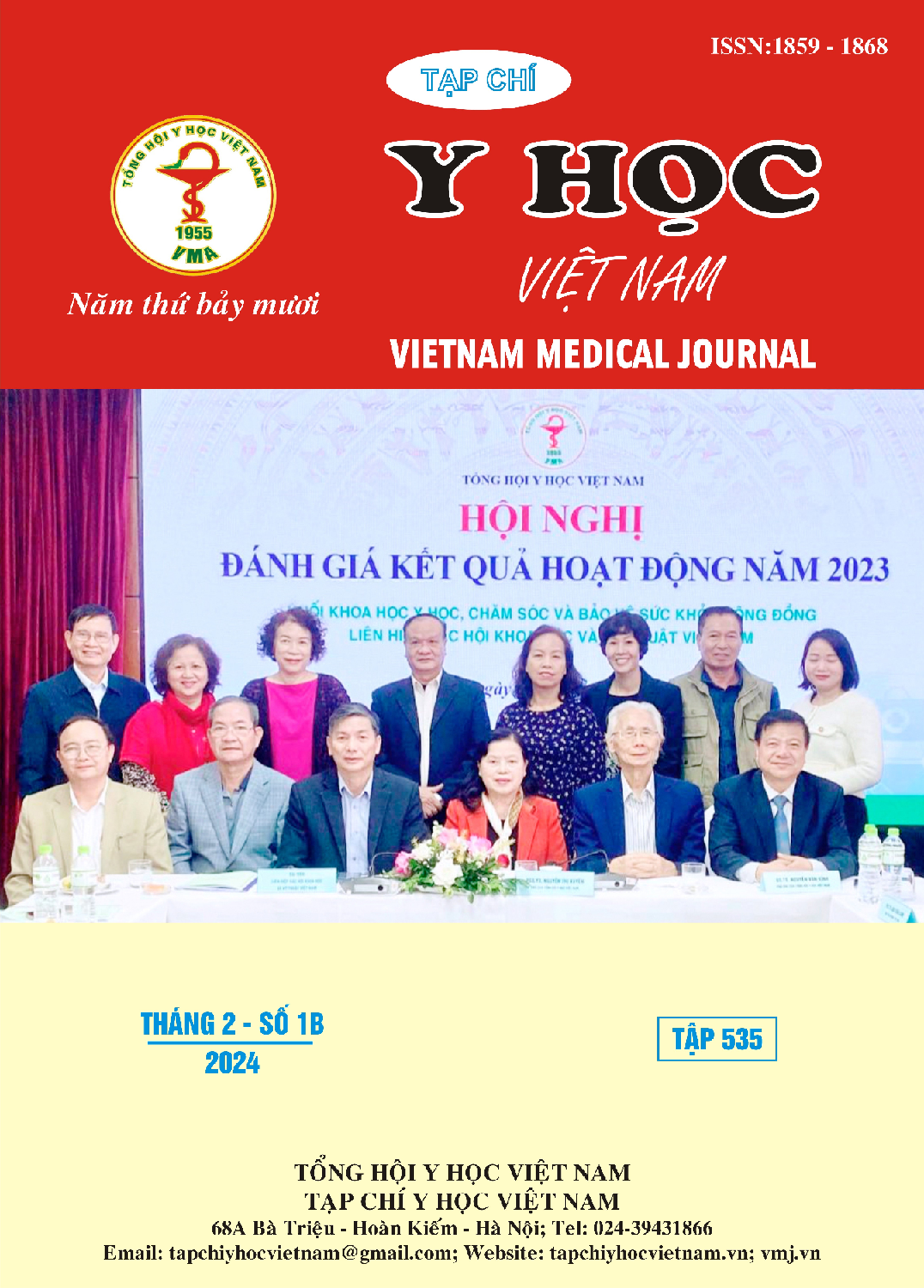VIÊM TỦY NGANG LAN RỘNG DỌC SAU NHIỄM VIRUS DENGUE Ở TRẺ EM: BÁO CÁO CA BỆNH
Nội dung chính của bài viết
Tóm tắt
Viêm tủy ngang lan rộng dọc là một hình thái của viêm tủy cắt ngang, có thể gặp trong phổ bệnh lý viêm tủy thị thần kinh hoặc phổ bệnh liên quan đến kháng thể kháng myelin-oligodendrocyte-glycoprotein (MOG-IgG). Bệnh do đáp ứng miễn dịch sau tình trạng nhiễm trùng hoặc sau tiêm vắc xin, trong đó sau sốt xuất huyết Denge là một nguyên nhân hiếm gặp. Chúng tôi báo cáo một trường hợp trẻ nam 10 tuổi, chẩn đoán viêm tủy ngang lan rộng dọc có kháng thể MOG-IgG dương tính sau nhiễm virus Dengue, điều trị đáp ứng tốt với liệu pháp corticosteroid liều cao.
Chi tiết bài viết
Từ khóa
viêm tủy ngang lan rộng dọc, viêm tủy cắt ngang, myelin-oligodendrocyte-glycoprotein-IgG, MOG, Dengue.
Tài liệu tham khảo
2. H. Celik et al., “Longitudinally extensive transverse myelitis in childhood: Clinical features, treatment approaches, and long-term neurological outcomes,” Clin. Neurol. Neurosurg., vol. 207, p. 106764, Aug. 2021, doi: 10.1016/j.clineuro. 2021.106764.
3. N. Badat, D. Abdulhussein, P. Oligbu, O. Ojubolamo, and G. Oligbu, “Risk of Transverse Myelitis Following Dengue Infection: A Systematic Review of the Literature,” Pharm. Basel Switz., vol. 7, no. 1, p. 3, Dec. 2018, doi: 10.3390/pharmacy7010003.
4. J. Comtois et al., “Longitudinally extensive transverse myelitis with positive aquaporin-4 IgG associated with dengue infection: a case report and systematic review of cases,” Mult. Scler. Relat. Disord., vol. 55, p. 103206, Oct. 2021, doi: 10.1016/j.msard.2021.103206.
5. A. L. Bruijstens et al., “E.U. paediatric MOG consortium consensus: Part 1 - Classification of clinical phenotypes of paediatric myelin oligodendrocyte glycoprotein antibody-associated disorders,” Eur. J. Paediatr. Neurol. EJPN Off. J. Eur. Paediatr. Neurol. Soc., vol. 29, pp. 2–13, Nov. 2020, doi: 10.1016/j.ejpn.2020.10.006.
6. Y. Nakamura et al., “Anti-MOG antibody-positive ADEM following infectious mononucleosis due to a primary EBV infection: a case report,” BMC Neurol., vol. 17, no. 1, p. 76, Apr. 2017, doi: 10.1186/s12883-017-0858-6.
7. M. Nakamura et al., “A case of MOG antibody-positive bilateral optic neuritis and meningoganglionitis following a genital herpes simplex virus infection,” Mult. Scler. Relat. Disord., vol. 17, pp. 148–150, Oct. 2017, doi: 10.1016/j.msard.2017.07.023.
8. Y. Shiga, T. Kamimura, Y. Shimoe, T. Takahashi, K. Kaneko, and M. Kuriyama, “[Anti-myelin oligodendrocyte glycoprotein (MOG) antibody-positive varicella-zoster virus myelitis presenting as longitudinally extensive transverse myelitis: a case report],” Rinsho Shinkeigaku, vol. 57, no. 10, pp. 579–583, Oct. 2017, doi: 10.5692/clinicalneurol.cn-001066.
9. H. Amano et al., “Influenza-associated MOG antibody-positive longitudinally extensive transverse myelitis: a case report,” BMC Neurol., vol. 14, p. 224, Nov. 2014, doi: 10.1186/s12883-014-0224-x.
10. J. Lambe et al., “Myelin oligodendrocyte glycoprotein-IgG associated disorders (MOGAD) following SARS-CoV-2 infection: A case series,” J. Neuroimmunol., vol. 370, p. 577933, Sep. 2022, doi: 10.1016/j.jneuroim.2022.577933.


